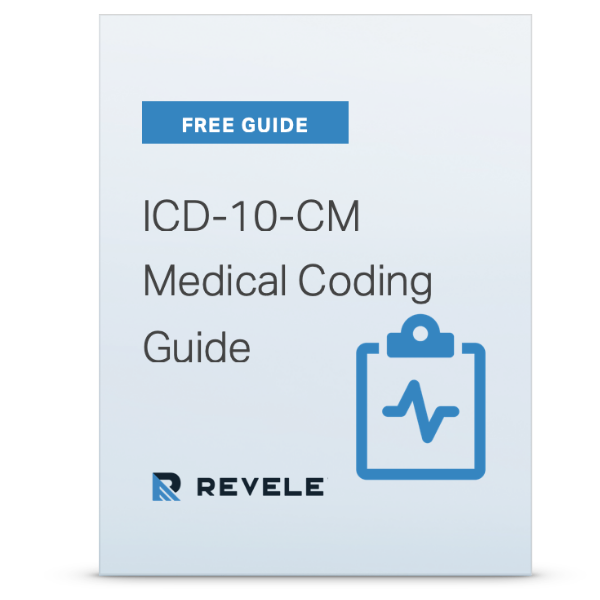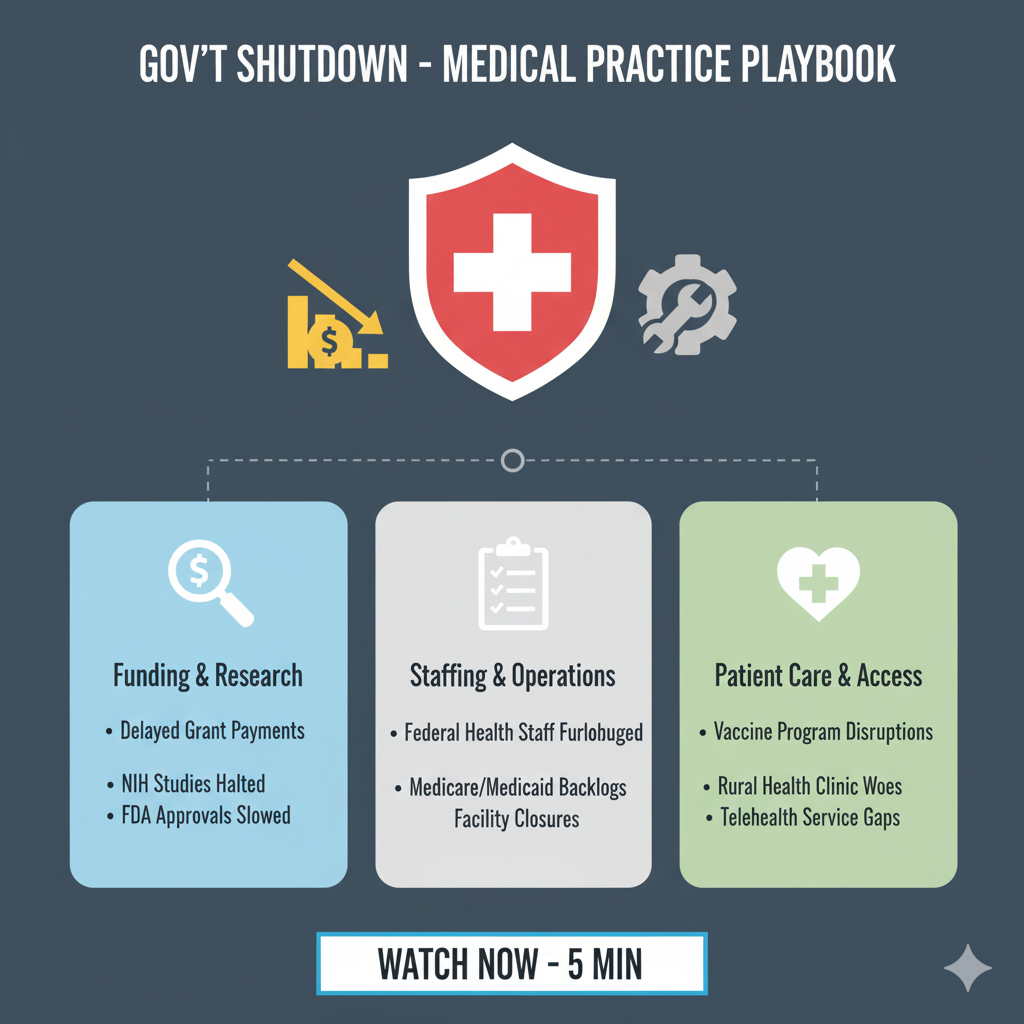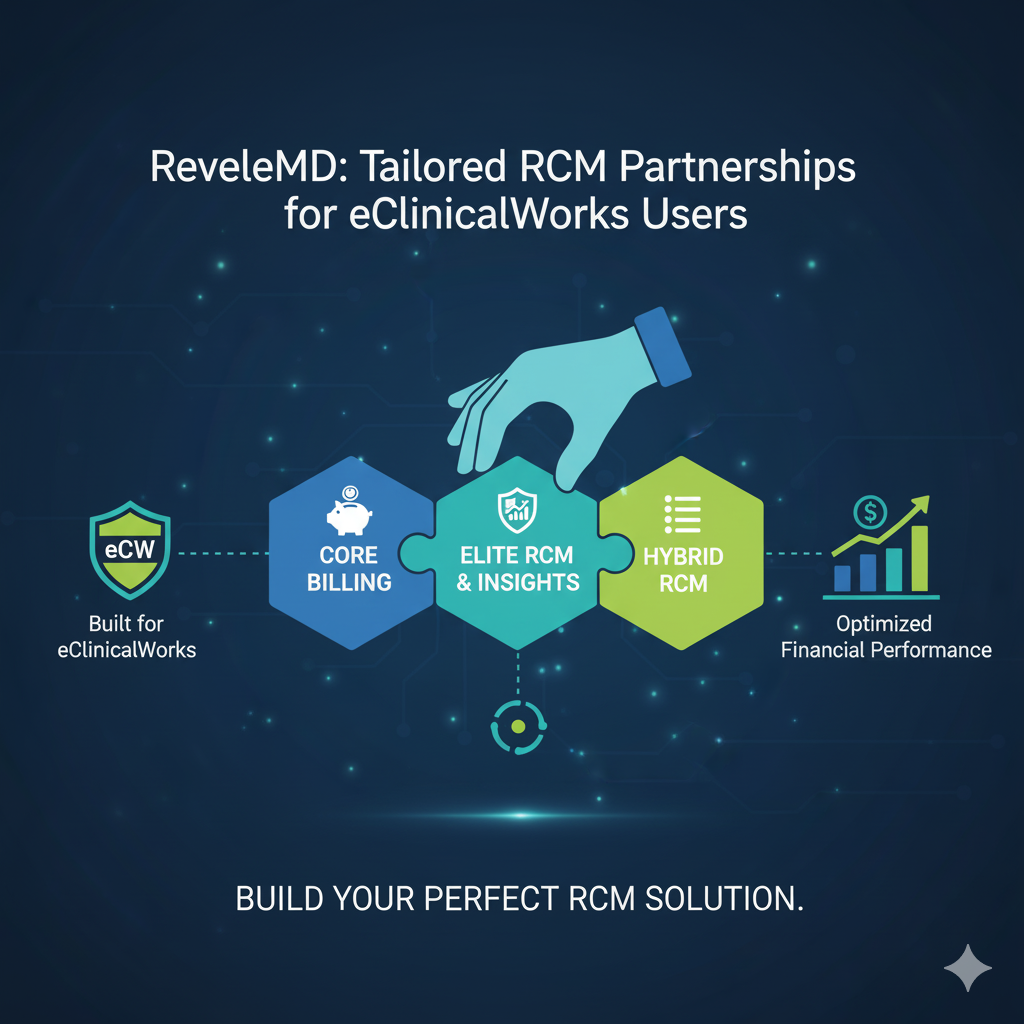We face enormous uncertainty as we continue to battle COVID-19 and understand the long term impact it will have on healthcare. While the full impact is unknown, one thing is sure: COVID-19 will inevitably and drastically impact revenue cycle management. Most organizations were quick to implement telehealth to replace in-person visits to minimize the spread of COVID-19, but what other elements should be considered for effective action planning to avoid financial distress during this global pandemic?
As healthcare leaders adjust to this new normal, it may be necessary to tap into other sources of operating capital or explore temporary partnerships. Here, we will cover some optional sources for working capital to assist with cash flow management.
The CARES Act
The Coronavirus Aid, Relief, And Economic Security (CARES) Act is the largest stimulus bill in US history with $2 trillion in allocations. As the third stimulus bill passed by Congress in response to the COVID-19 outbreak, the CARES Act offers relief and support for small businesses and the US healthcare sector.Some of the bill’s provisions that affect the healthcare system include:
- Coverage for COVID-19 Testing
- Increasing Provider Funding through Immediate Medicare Sequester Relief
- Allowing Federally Qualified Health Centers and Rural Health Clinics to Furnish Telehealth in Medicare
- Enabling Physician Assistants and Nurse Practitioners to Order Medicare Home Health Services
- Expanding Medicare Telehealth Flexibilities
- Eliminating Medicare Part B Cost-Sharing for the COVID-19 Vaccine
- Health Savings Accounts for Telehealth Services
- Over-the-Counter Medical Products without Prescription
- Liability Protection for Volunteer Health Workers
- Providing Hospitals Medicare Advance Payments
- Extension of Physician Work Geographic Index Floor
- Allowing Up to 3-Month Fills and Refills of Covered Medicare Part D Drugs
For a complete list of the bill’s provisions that affect the healthcare system prepared by the Healthcare Business Management Association (HBMA), click here.
The CARES Act: Healthcare Provider Lost Revenue Grants
The CARES Act establishes a $100 Billion Grant Fund exclusively for healthcare providers who are enrolled in the Medicare and Medicaid program. The purpose of this fund is to provide grants to practices that have experienced a reduction in revenue or an unexpected increase in costs due to the COVID-19 pandemic. The money will be available during the period of the national emergency.
The Healthcare Provider Lost Revenue Grant program is intended to provide medical practices with an infusion of money that will help replace the money lost due to reduced patient volume because of the COVID-19 pandemic.The Department of Health and Human Services (HHS) is currently working on a formula to determine how to calculate a provider’s lost revenue. This is lost revenue, whether it is reduced volume for Medicare, Medicaid, or commercially insured patients.It may take one week to 10 days for CMS to have all of the necessary applications in place to get the money flowing. Still, these grants could be critically important for healthcare providers that are experiencing a revenue decline due to COVID-19.
The CARES Act: Payroll Protection Program
For small businesses with 500 or fewer employees, including sole proprietors and other self-employed individuals, the Paycheck Protection Program (PPP) Loan provides relatively easy access to loans of up to $10 million. More importantly, some or most of the loan can be forgiven and not paid back if the borrower meets certain conditions, such as providing employment during an 8-week period. Some key details include:
- The covered period runs from February 15, 2020, through June 30, 2020.
- Loans are fully guaranteed by the federal government through December 31, 2020
- Proceeds can be used to pay wages, utilities, rent, and any other debt service requirements.
- Repayment of the loan can be deferred for at least six months, but not to exceed a year.
- Treasury aims to have a website up by the first week of April to accept requests and make disbursements on the same day
- Loans (less amount forgiven as described below) will have a maximum maturity of 10 years and an interest not to exceed 4%
- Payroll costs include wages, commission, salary or similar compensation to an employee or independent contractor, cash tip, vacation, and sick leave, allowance for dismissal or separation, group health benefits/premiums, retirement benefits, local taxes assessed on the comp of employees
- Payroll costs do not include compensation in excess for an annual salary of $100,000, payroll taxes, compensation for individuals whose principal place of residence is outside the US, qualified sick leave or family medical leave that qualifies for credit under the Family First Coronavirus Response Act (FFCRA).
- Standard SBA loan fees are waived and no personal guarantees, no collateral is required.
- The loan is limited to lesser of:
- Sum of 1) average monthly “payroll costs” for the one year period ending on the date the loan was made multiplied by 2.5 and 2) any disaster loan taken out after January 31, 2020, that is refinanced into a paycheck protection loan, and
- $10 million
Paycheck Protection Loan Forgiveness
Some of the proceeds for Paycheck Protection Loan can be forgiven on a tax-free basis. The amount to be forgiven on a tax-free basis equals payments made by the borrower during the eight week period beginning on the date of the loan for the following: payroll costs as defined above, mortgage interest, rent, certain utility payments.
The amount that can be forgiven may be reduced if the borrower reduces its workforce during the 8-week covered period when compared to other periods in either 2019 or 2020. It can also be reduced if the annual wages of employees earning less than $100,000 were reduced by 25% during the covered period. The reduction can be avoided if the employer rehires or increases the pay within an allotted time.
The CARES ACT: Federal Loans (Business with 500-10,000 employees)
Businesses with 500-10,000 employees are not eligible to receive loans under the Paycheck Protection Program. Instead, such medium-sized businesses can only apply for direct loans under Title IV of the CARES Act. These loans do not provide for any forgiveness but do allow for deferment of principal and interest payments for at least the first six months. Additionally, the loans can have up to a five-year term with a 2% interest rate. Significantly though, in receiving such loans, companies are required to certify and abide by the following restrictions:
- The funds the employer receives will be used to retain at least 90% of the recipient's workforce, at full compensation and benefits until September 30, 2020.
- If the employer has already laid off employees, it will restore not less than 90% of its workforce that existed as of February 1, 2020 with full compensation and benefits no later than four months after the termination of the public health emergency.
- The employer is domiciled in the United States with significant operations and employees located in the United States.
- The employer will not outsource or offshore jobs for the term of the loan and two years after completing repayment of the loan.
- The employer will remain neutral in any union organizing effort for the term of the loan.
- The employer will not "abrogate" existing collective bargaining agreements for the term of the loan and for the two years after completing repayment.
Further, in entering into such loan agreements, medium-sized employers must agree to certain limitations for highly-compensated employees and officers:
- During the term of the loan and for one year thereafter, no officer or employee of a recipient business whose total compensation exceeded $425,000 in 2019 (other than an employee whose compensation is determined through an existing collective bargaining agreement entered into prior to March 1, 2020) will receive total compensation greater than what the employee received in 2019.
- Further, the same officer or employee cannot receive severance pay or other benefits upon termination exceeding twice the maximum total compensation received from the employee from the business in 2019.
- Any officer or employee whose total compensation exceeded $3 million in 2019 may not receive in excess of $3 million, plus 50% of the excess over $3 million received by the officer or employee in 2019.
The CARES Act: Significant Tax Measures for Business
- Delay of Payment to Employer Payroll Tax and Self Employment Tax: Employers can defer the Employer’s share of the 6.2% Social Security tax that would typically be due from the date of enactment through the end of 2020. The tax can now be paid in two equal payments on December 31, 2021, and December 31, 2022.In addition, the self-employed can defer paying 50% of the self-employment tax for the same period. Likewise, the tax can now be paid in two equal payments on December 31, 2021, and December 31, 2022.Note: This deferral may not be available to employers that take out a Payroll Protection Loan.
- Delay of Estimated Taxes: Corporations can postpone estimated tax payments (due after the date of the announcement) until October 15, 2020
- Refundable Credit for Retaining Employees: Employers can receive a tax credit equal to 50% of qualified wages paid up to $10,000 from March 13, 2020, to December 31, 2020. It is available to businesses that were required to shut down and companies that had a decrease in revenue of 50% or more when compared to the same quarter of 2019. The credit is available for employees retained by not working due to the virus for businesses with more than 100 employees, and for all employee wages for firms with 100 or fewer employees. For purposes of this provision, wages include premiums for employee health plans. Note: This credit may not be available to employers who take out a payroll protection loan.
- Changes to the Bonus Depreciation for Qualified Improvement Property - Retroactive: The Care Act provides technical corrections to provisions in the 2017 tax law ("Tax Cuts and Jobs Act") to treat qualified improvement property as 15-year property under MACRS, and eligible for bonus depreciation. These corrections are retroactive to the effective date of the Tax Cuts and Jobs Act, which means that 2018 returns may be amended to reflect the change to claim a refund.
- Modifications for Net Operating Losses: The ACT changes some rules that may limit losses from business as it related to NOL’s. The change is retroactive to 2018, meaning that some taxpayers could file amended returns for 2018 and 2019 to claim a refund.
- Interest Limitation Rules: The Act increases the amount of interest businesses can deduct in 2019 and 2020.
The CARES Act: Unemployment Protections for Individuals
In certain unfortunate situations, medical practices may not have the financial resources to maintain staff at pre-COVID-19 levels. In these situations, practices may consider furloughing staff. A furlough typically allows staff to return to work after a temporary period, i.e., unpaid time off. In some situations and states, the furloughed staff retains employee benefits. The furloughed staff may also qualify for unemployment benefits. The CARES Act does provide enhanced unemployment benefits for individuals that have lost work.
- Extra Unemployment Benefits. The federal government would give workers an extra $600 a week on top of the state benefits for four months.
- Temporary Pandemic Unemployment Assistance. Through December 31, 2020, unemployment assistance would be available to those not traditionally eligible for unemployment benefits who are unable to work as a direct result of the coronavirus. This group would include independent contractors and the self-employed.
- An Additional 13 Weeks of Unemployment Benefits. Through December 31, 2020, assistance would be paid to help those who remain unemployed after weeks of state unemployment benefits are no longer available.NOTE: Unemployment benefits and qualifications vary according to state law. Businesses may also be subject to certain requirements in the event that it lays off or reduces work for staff. Please consult your Employment Law expert for advice.
Economic Injury Disaster Loans (EIDL) and $10,000 Grant
The Small Business Administration (SBA) is currently making available funds for low-interest federal disaster loans for small businesses and non-profit organizations affected by COVID-19. Medical practices may qualify for loans up to $2 million with an interest rate of 3.75% and a payback period as long as 30 years. The interest rate for non-profit organizations is 2.75%.
Eligible applicants for an EIDL can receive $10,000 emergency grant within 3 days of application which will not have to be repaid even if the applicant gets rejected on the EIDL. However, if you are able to secure a PPP loan, the $10,000 grant will be subtracted from the forgiveness amount.
NOTE: The Paycheck Protection Program (PPP) created by the CARES Act prohibits borrowers from taking out two loans for the same purpose. For more information on PPP loans, visit uschamber.com/sbloans. For more information, visit the U.S. Small Business Administration website.
To apply for a COVID-19 Economic Injury Disaster Loan, click here.
IRS Federal Income Tax Deferral for 2019 Taxes
Many practices and providers face income tax liabilities that are typically due by April 15, 2020. Due to the COVID-19, the Internal Revenue Service (IRS) has officially announced that the due date for making federal income tax payments has been delayed until July 15, 2020, for many taxpayers and businesses. Any balance typically due by April 15, 2020, including estimated tax payments are now due by July 15, 2020, without incurring late payment penalty or interest.A recent announcement has indicated that the filing deadline for tax returns will also be delayed until July 15, 2020. Some states and local tax authorities are also offering tax relief. For a continually updated list, click here.
Facebook Grants
Facebook has announced a $100 million program to help up to 30,000 eligible small businesses affected by the virus. Facebook will be assisting in the form of grants and ad credits. For more information, click here.
Convert Existing Accounts Receivables to Cash
Due to the complexity of the healthcare reimbursement model, many practices struggle with accounts receivables that could be converted into cash flow, including receivables from third-party payers and patients. In some cases, due to limited resources, practices struggle with taking the steps necessary to follow-up, resolve, and convert these aged claims into cash.
Over the next few months, it will be essential to keep the billing office running, and in some cases, billing office staff may have more “free” time due to decreased patient visits. If this is the case, qualified staff should focus on resolving and converting the outstanding claims, especially the insurance and third-party claims.
The usual and customary goal of all practices should be to resolve all third-party claims. However, in this unique situation, the claims should be prioritized according to the “low hanging fruit” theory. In other words, the claims with the largest expected payment in the shortest amount of time should be worked first. This is a cost-effective strategy for those practices that will continue to pay qualified staff even during the period of reduced workload.
Most modern-day electronic health record (EHR) systems are cloud-based, allowing employees to log in remotely, with the proper equipment, if the staff is working from home.
Temporarily partnering with a firm that can assist with healthcare receivables management can also be a short-term option for those practices that don’t have qualified staff available to convert the aged AR into cash effectively. Generally, these arrangements have no upfront costs, and fees are only paid when your practice receives the cash from the claims.
Medical AR Factoring
Another method for converting Accounts Receivables into cash is AR Factoring. Factoring companies advance your practice an amount typically equal up to 80% of the net payment expected for the third-party claims.
Generally, the factoring company is paid back when the third party pays the claim. The advantage of this type of arrangement is that the practice typically receives cash quickly after the claims are transferred to the factoring companies. The practice avoids having to wait for the third-party payers to submit payment for the claims. Of course, the factoring company charges financing and other fees depending upon the arrangement. A quick search for “AR Factoring Companies” on Google will display several factoring companies to consider.
Business Interruption Insurance
Most businesses have Business Interruption Insurance as part of their business insurance coverage package. Business Interruption Insurance is a type of insurance that covers loss of business income as the result of some sort of disaster-related interruption in the normal operations of a business. Typically, qualifying disasters include fire or natural disaster. As you can imagine, the question of whether the COVID-19 pandemic qualifies as a disaster under Business Interruption Insurance is a hot topic.
A proposed New Jersey bill may require insurers to cover COVID-19 business interruption losses. Some have suggested that the federal government should somehow participate in the coverage of these policies. At a minimum, you should pose the question to your insurance provider to see what coverage your policy covers.
The CMS Accelerated and Advanced Payments Program
To increase cash flow to providers of services and suppliers impacted by the 2019 Novel Coronavirus (COVID-19) pandemic, the Centers for Medicare & Medicaid Services (CMS) has expanded its current Accelerated and Advance Payment Program to a broader group of Medicare Part A providers and Part B suppliers. The expansion of this program is only for the duration of the public health emergency. Details on the eligibility and the request process are outlined below.
Most providers and suppliers will be able to request up to 100% of the Medicare payment amount for a three-month period. Inpatient acute care hospitals, children’s hospitals, and certain cancer hospitals can request up to 100% of the Medicare payment amount for a six-month period. Critical access hospitals (CAH) can request up to 125% of their payment amount for a six-month period.
CMS has extended the repayment of these accelerated/advance payments to begin 120 days after the date of issuance of the payment. Medicare claims shall be paid as usual during the 120 day period. However, the advance will be recouped from Medicare claims with a date of service after the 120 day period dollar for dollar. Organizations planning to use this program should be aware that collection from Medicare will go down in future periods due to recoupment.
Inpatient acute care hospitals, children’s hospitals, certain cancer hospitals, and Critical Access Hospitals (CAH) have up to one year from the date the accelerated payment was made to repay any remaining balance after recoupment. All other Part A providers and Part B suppliers will have 210 days from the date of the accelerated or advance payment was made to repay any remaining balance after recoupment.
Revele does not provide tax, legal, or accounting advice. This material has been prepared for informational purposes only and is not intended to provide and should not be relied on for tax, legal, or accounting advice. You should consult your tax, legal, and accounting advisors before engaging in any transaction.
REVENUE CYCLE MANAGEMENT
Take the next step to elevate your RCM
Revele's integrated solutions brings together robust data, intelligent claim handling & performance consulting to guarantee a 10% increase in your cash flow.








